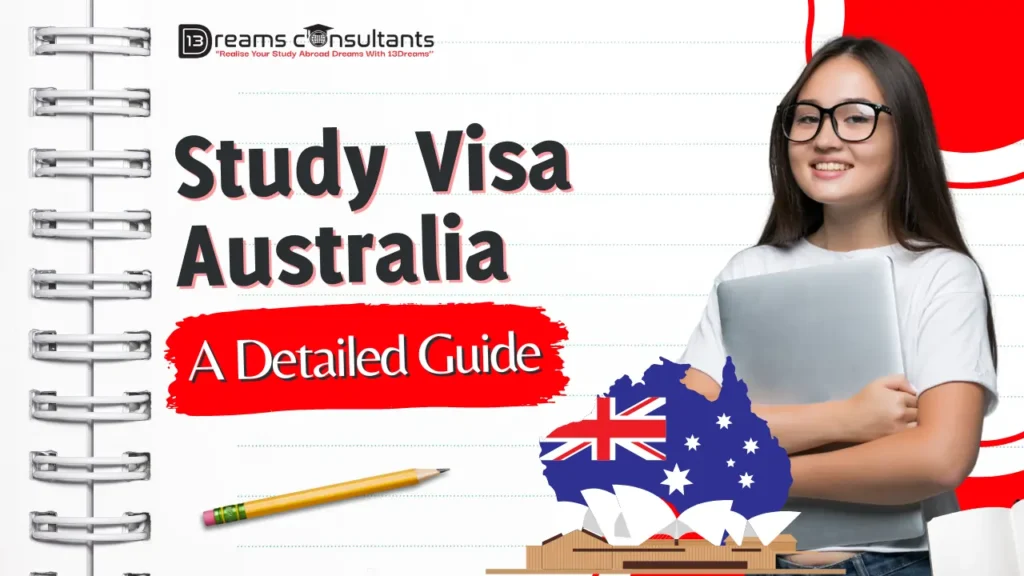The Migration Occupations List serves as a beacon for those seeking new horizons, guiding the journey of potential migrants and shaping the workforce of nations. This pivotal directory, a blend of demand and opportunity, not only dictates the eligibility of skilled professionals aspiring to cross borders but also reflects the evolving economic landscape and labor needs of countries.
As we delve into the intricacies of this list, we uncover the professions that stand at the forefront of global mobility, the stringent criteria governing their selection, and the profound impact they have on the dreams of countless individuals.
What is Migration Occupations List?
A Migration Occupations List (MOL) is a government list that identifies occupations in high demand for immigration purposes. It basically acts as a bridge between potential migrants and employers in a country.
Importance for Potential Migrants:
- Visa Eligibility: Being on the MOL is a key requirement for applying for skilled migration visas in many countries, like Australia’s Skilled Occupation List (SOL). If your occupation is listed, it opens the door to obtaining residency and work permits.
- Targeted Job Search: The MOL helps potential migrants focus their job search on occupations that have a higher chance of leading to migration opportunities. They can tailor their skills and experience to better match what employers are looking for.
Importance for Employers:
- Access to a Wider Talent Pool: The MOL helps employers tap into a broader pool of skilled workers from abroad. This can be crucial for filling positions where there’s a shortage of qualified domestic candidates.
- Streamlined Hiring: The MOL acts as a pre-screened list of qualified professionals. Employers can be more confident that candidates on the MOL possess the necessary skills and qualifications for the job.
Overall, the MOL benefits both potential migrants and employers by:
- Facilitating Migration: It smooths the process for skilled workers to migrate and contribute to the economy.
- Meeting Labor Shortages: It helps employers bridge skill gaps and find the talent they need.
Current Global Migration Trends
Australia, once a highly favored destination for international students, is observing a notable decline in student visa grants and overall net migration.
Recent crackdowns on visa approvals have led to a significant reduction in the number of overseas students entering the country, impacting educational institutions and migration trends alike.
Recent data reveals that there has been a significant decline in visa approvals for international students, especially those from South Asia. In the last two quarters of 2023, rejections have been as high as:
- 20% for the international student collective.
- Over 33% for students from Pakistan and India.
- More than 50% for Nepalese students.
This trend highlights the challenges faced by international students seeking study visas for Australia. It’s essential for prospective students to stay informed about the evolving visa policies and requirements to navigate the changing landscape effectively.
If you’re considering studying in Australia, I recommend keeping a close eye on official updates from the Australian government and consulting with educational advisors to understand the latest developments.
Migration Occupations List Influence Patterns
The current global migration trends for Australia, particularly concerning the Study Visa, indicate a few key points:
- Australia’s Migration Trends 2022-23: The official report by the Department of Home Affairs provides comprehensive data on migration, including student visa grants and their impact on the labor market.
- Student Visa Grants: There has been a notable decline in student visa grants, with recent data showing significant reductions in the number of overseas students entering Australia.
- Visa Rejection Rates: The last two quarters of 2023 saw increased visa rejection rates, especially for students from South Asia, with over 33% for students from Pakistan and India, and more than 50% for Nepalese students.
These trends are crucial for potential students planning to study in Australia, as they reflect the changing policies and conditions of the Australian immigration system. It’s important for applicants to stay informed about the latest requirements and statistics to better navigate the visa application process.
Categories of Migration Occupations List in high demand
The Migration Occupations List is categorized into different lists based on the needs of a particular country. For Australia, these categories include:
- Short-Term Skilled Occupation List (STSOL): For occupations needed for a short-term period.
- Medium and Long-Term Strategic Skills List (MLTSSL): For occupations in demand over a longer term.
- Regional Occupation List (ROL): For occupations in demand in regional Australia.
High Demand Professions:
- Healthcare: General Practitioners, Nurses, Midwives, and Psychiatrists are in high demand due to an aging population and healthcare sector expansion.
- Engineering: Mechanical Engineers and Construction Project Managers are sought after for infrastructure development and maintenance.
- IT Professionals: With the digital transformation of industries, roles like Software Engineers and ICT Security Specialists remain critical.
These professions are spotlighted as they play a pivotal role in supporting the economic and social fabric of the host country, addressing skill shortages, and contributing to industry growth. The demand for these professions influences migration patterns, as individuals with these skills have better visa prospects and opportunities for permanent residency.
Criteria for Inclusion in Migration Occupations List
There isn’t a publicly available, single set of criteria for occupations to be included on Australia’s Migration Occupations List (MOL). However, several factors are generally considered by the Department of Home Affairs when making these decisions. Here’s what we know:
Labor Market Needs:
- Skill Shortages: Occupations experiencing critical skill shortages within Australia are strong contenders for the MOL. The government aims to fill these gaps through skilled migration.
- Economic Growth: The MOL prioritizes occupations that contribute significantly to Australia’s economic growth and development.
Skill Level and Training Requirements:
- ANZSCO Skill Levels: The Australian and New Zealand Standard Classification of Occupations (ANZSCO) classifies occupations based on skill level. Generally, occupations on the Migration Occupations List (MOL) fall within ANZSCO Skill Levels 1 to 4 (basic to advanced skills). https://www.abs.gov.au/
- Formal Qualifications: Typically, occupations requiring formal qualifications like diplomas, degrees, or trade certifications are more likely to be included.
Salary Levels:
- Draft Core Skills Occupations List (CSOL): This proposed list focuses on occupations with a median salary below $70,000 but still considered essential. Final details and salary thresholds are under consultation.
- Skilled Occupation List (SOL): While no specific salary threshold exists, occupations on the SOL generally command salaries that reflect their skill level and contribute to a sustainable standard of living.
Other Potential Factors:
- Future Job Market Outlook: The projected future demand for an occupation might also influence its inclusion on the Migration Occupations List (MOL.
- Employer Sponsorship: If a particular occupation has a high number of employer sponsorship nominations, it could strengthen its case for inclusion.
Migration Occupations List (MOL) is subject to change based on Australia’s evolving skill needs. These resources offer the most up-to-date information on occupations currently in demand for migration purposes.
Impact on Visa Applications
The Migration Occupations List in Australia significantly impacts various visa categories, particularly skilled migration visas. Here’s how:
- Skilled Independent Visa (Subclass 189): This permanent visa doesn’t require sponsorship or nomination. If your occupation is on the list, you can apply via an Expression of Interest (EOI).
- Skilled Nominated Visa (Subclass 190): For this permanent visa, you need nomination by an Australian state or territory government. Being on the list is essential for eligibility.
- Skilled Regional (Provisional) Visa (Subclass 489): This temporary visa requires sponsorship by a relative or nomination by a state or territory government. The list determines which occupations qualify.
- Employer Nomination Scheme (Subclass 186): Employers can sponsor skilled workers for permanent residence if their occupation is on the list and they meet other requirements.
- Temporary Skill Shortage Visa (Subclass 482): The list influences which occupations are eligible for this temporary visa, allowing employers to address labor shortages.
The list ensures that the skills of migrants align with the labor market needs of Australia, facilitating a targeted migration approach.
Updates and Changes
There are two main points to consider for updates and changes to Australia’s Migration Occupations List (MOL):
Generally:
- The MOL isn’t a single list, but rather two:
- Skilled Occupation List (SOL): The main list of in-demand occupations for skilled migration visas.
- Short-term Skilled Occupation List (STSOL): A smaller list for occupations with shorter-term skill shortages.
- The Department of Home Affairs updates the SOL regularly, but there isn’t a set schedule.
- Specific updates aren’t always announced publicly.
Recent Changes:
- Employer Nomination Scheme (ENS) and Regional Sponsored Migration Scheme (RSMS): A significant change occurred in November 2023. Occupations no longer need to be explicitly listed on the SOL for these visa subclasses. As long as the occupation is in the ANZSCO classification system and the applicant continues working in the nominated occupation, they can be eligible.
Here are some resources to stay updated on changes to the MOL:
- Department of Home Affairs website: This is the official source for the latest SOL and information on skilled migration visas. They may not announce every change, but the most up-to-date list will always be there.
- Migration Agent Websites: Registered migration agents stay informed about changes and can provide updates. Be sure to choose a registered agent .
- Subscription Services: Some organizations offer subscription services that notify users of changes to the MOL.
Remember, these resources are the best way to stay on top of the latest updates and changes to Australia’s Migration Occupations List.



